Walking or trekking poles tend to be a bit of a Marmite piece of kit: opponents hate them; advocates wouldn’t go into the great outdoors without them.
Many outdoor fans cope quite nicely thank you without resorting to using poles, but they certainly have their uses.
Poles can be used to provide extra propulsion uphill; think of a constantly available banister in each hand to provide some upward thrust. We’ve found using poles on hill walks reduces ‘thigh burn’ as some of the effort is transferred from leg muscles to shoulders and arms.
On downhill sections, poles can take some of the strain and alleviate the pounding on knees. Poles also provide extra stability on uneven ground; can be used also to steady yourself crossing streams, and are also useful in testing the ground if a suspect boggy section lies ahead: just how far into that mud are you likely to sink?
One pole brand even points out they can be used to fend off animals, though we’ve never actually tested that particular aspect.
A growing number of specialist lightweight tent and shelter manufacturers also assume you’ll have walking poles as their design is dependent on using these in place of conventional tent poles.
Using poles when carrying a heavy backpack also has the dual purpose of spreading some of the weight and aiding stability.
But carrying poles means some extra weight, and you also have to think about where you place your poles as well as foot placement and, as anyone who has followed a walker using poles will know, flailing poles can be a hazard to fellow walkers, especially anyone following too closely.
So, if you’ve decide poles are for you, which ones will you plump for? We tested seven models, ranging in price from a budget £25 a pair right up to an ultra-lightweight pair costing well over £100.
Length adjustment is useful in poles. Ideally, your forearm and should be roughly level when grasping the handle on flat ground. You may want to shorten poles when going uphill and lengthen them on downhill sections, but much of this comes down to personal preference.
Ease of length adjustment will probably mean you take the time to change length for different terrain; fiddly systems increase the likelihood you won’t bother and just leave them the same length throughout the day.
One pair, the Black Diamond Ultra Distance, come as fixed length, so it’s important you buy the correct version for the use you want to put them to.
The two most popular systems for adjusting length are the internal method, where the barrels of the lower two sections are rotated to slacken then lock the shafts when the correct length is reached. Poles with this type of adjustment use an expanding element within the shaft and are neater looking, but making the adjustment is more time consuming and fiddly.
An alternative is the external lock, with a tab that is lifted then pressed back down to lock the section. These are quicker to use but the external locks are bulkier.
Some brands adjust their length by extending the bottom section to a stop mark and then sliding the middle section to the required measurement; others have length markings on both the bottom and middle sections, so both will need adjusting if lengthening or shortening.
The MSR Talus takes a different route, with a trigger in the handle releasing the internal locking lugs, with the poles easily slid up or down to the required length. These were by far the easiest and quickest to adjust, but weight and price were the downsides.
All the poles came with a basket of some size to help on boggy ground. Many also came with removable rubber ferrules to cover the metal tips. In some overseas areas, these are compulsory to reduce environmental impact on the route. However, we found the grip was little or no better on rock paths with the ferrules fitted so, unless you have to, we would leave the rubber ferrules off. They do reduce noise a little, but not appreciably.
Some of the poles have an anti-shock setting, which engages a sprung mechanism that allows some shock absorption as the pole hits the ground. We found in practice this didn’t make a huge difference to comfort.
Anatom Explorer
Price: £70 (pair)
Country of manufacture: not stated
Weight: 572g (including removable basket)
Colour: black/silver
Length: collapsed: 65cm
Maximum length: 135cm
Material: 6000 grade aluminium
Anatom is better known for its footwear, and the Explorer is the only walking pole in its range.
The Explorers are middling in weight, but felt quite light and balanced in use.
The external Quicklock system makes adjustment easy. Height adjustment is solely by lengthening or shortening the middle section, with a stop mark only on the bottom section of the pole. Helpfully, markings are in single cm increments between 115cm and 135cm, though after a period of use, some of these were beginning to wear off.
The red locks have a knurled screw to adjust locking tension.
The handles, though comfortable, felt a little slippery. There’s a lower extension which can be used on uphill sections to lessen need to adjust length.
The Explorers’ straps are not very comfortable, a fault we found with many sets of poles. The crook of thumb and forefinger falls on webbing section rather than fleece-lined part.
Rubber ferrules didn’t grip particularly well. We’d recommend sticking to carbide tips unless local regulations dictate otherwise.
There was a slight flexing when downward pressure applied, but the alloy appeared relatively robust. Anatom offers a lifetime guarantee against manufacturing faults.
Performance 19/30
Ease of use 22/30
Comfort 10/20
Quality 6/10
Value for money 5/10
Total score: 62/100
Black Diamond Ultra Distance
Price: £119 (pair)
Country of manufacture: Taiwan
Weight: 268g (pair)
Colour: black
Length: collapsed: 37cm
Material: carbon-fibre
The Ultra Distance poles were by far the lightest in the test and differ in several significant aspects.
They are made of carbon fibre rather than aluminium, so there’s less flex in the shafts.
The length of the Ultra Distance is not adjustable, so it’s important to buy the right length for your height and the use you’re going to put the poles to.
These Black Diamond poles are Z-Poles, consisting of three sections which have a Kevlar cord holding them together internally, with sheaths in a cone shape to enable them to slot together quickly.
Folded into its z-shape, the pole is very short – not much longer than a 12-inch ruler – which means they will stash in a large jacket pocket or can even just be tucked under a rucksack strap. The Ultra Distance poles come with a semi-net pouch with Velcro lid, which also holds the alternative tips.
We used the carbide tips, but the poles also come with screw-in rubber tips. The screw-in mechanism, though, is very stiff and really needs pliers to unfasten. Carrying the necessary multi-tool or pliers will negate much of the weight advantage of using these ultra-light poles.
In practice, we stuck to the carbide tips, although they did slip a little more than some other poles on stone flags.
To lock the poles in their extended position, you simply pull up on the handle until the locking button engages, which pulls the three sections together.
Folding the pole is a matter of pushing in the locking button just below the handle and pulling the three sections apart to fold them together. The very small basket has a shaft catcher cut-out that locks on to the top pole section to keep them together when folded.
The EVA handle has little padding and is fairly slender, but we still found it quite comfortable. There is a lower extension for uphill sections – important in a pole you can’t shorten.
The straps are reasonably comfortable too, though there’s little in the way of padding, presumably to keep weight to a minimum. Strap length adjustment is by Velcro strips, which works well. However, even at end of their adjustment range, they are not that long, and we struggled to get a comfortable fit when using thick gloves. There are reflective areas on the straps. You can buy longer straps for the Ultra Distance poles.
The very light nature of the Ultra Distance poles means there’s little moment as you swing them, cutting potential fatigue when used over a long period.
Despite their low weight, they feel very solid.
Walkers who like to change the length of a pole when tackling, for instance, downhill sections, may be disappointed in the lack of adjustment, but we have found, in practice, we rarely change the length of our poles and we didn’t find this a hardship.
The Ultra Distance poles are great for anyone who doesn’t want to be burdened with too much weight. They are clearly aimed at users such as ultra-runners and fast-and-light trekkers. On weight, they are unbeatable in this test and they performed well too.
Despite their featherweight they felt absolutely solid. The ability to quickly fold them down and stash them is a boon when it’s time to free hands on, say a scrambly section.
Black Diamond describes them as three-season poles: they won’t take a snow or powder basket; and we certainly struggled to get a thick glove through the strap.
The Ultra Distance Poles also come with a storage pouch with a compartment for whichever tips you aren’t using.
But for outdoor users who value simplicity and hate carrying extraneous weight, the Ultra Distance poles are great.
Performance 22/30
Ease of use 27/30
Comfort 16/20
Quality 8/10
Value for money 6/10
Total score: 79/100
Craghoppers Superlite Shock Absorber Pole
Price: £50 (pair)
Country of manufacture: China
Weight: 516g (pair, including removable basket)
Colour: grey/silver
Length: collapsed: 64.5cm
Maximum length: 125cm
Material: aircraft-grade aluminium alloy
The Superlites are fairly slender poles. Internal adjustment was fairly easy with twist grips. Only the top section needed to move to adjust length.
The handle is a combination of cork and foam and is fairly comfortable, though the cork grip has slits on the back which can be felt quite markedly when in use.
There is a lower extension to the foam section for use when going uphill.
With prolonged use, the straps became uncomfortable, their webbing rubbing on the crook between thumb and forefinger. In common with many models tested, the softer fleece lining of the strap only covers part of the interior, and not the crux where pressure is applied when pushing uphill.
The supplied rubber ferrules don’t improve grip on hard surfaces much.
The poles’ anti-shock mechanism is engaged by twisting the upper section to a click, and worked OK, though even when disengaged there was a little movement still in the pole.
The Craghoppers Superlite Shock Absorber Poles are competent, basic poles which performed reasonably well, but weren’t the most comfortable in use.
Performance 18/30
Ease of use 16/30
Comfort 9/20
Quality 6/10
Value for money 6/10
Total score: 55/100
Leki Khumbu Speed
Price: £90 (pair)
Country of manufacture: Czech Republic
Weight: 616g (pair, including basket)
Colour: black/silver
Length: collapsed: 64.5cm
Maximum length: 145cm
Material: 7000 series aluminium
Leki makes a huge range of poles for all sorts of activities. The German brand manufactures in its Czech factory and the Khumbus they provided have a very solid feel, though they are on the heavier side.
The Speedlock external adjustment locks work well, once you have adjusted the screw to get the correct locking force. Pole length adjustment requires both lower and upper sections to have lengths changed to correct setting.
The Aergon CorTec cork composite handle was fairly comfortable and straps quite comfortable, with long fleece linings. Strap length adjustment was easy too, with a simple tug upwards unlocking the mechanism in the top of the handle.
There was good performance from the carbide tips, with little slipping on hard ground.
The Leki poles have a quality feel and all the adjustments felt solid and well made. The Khumbu poles are part of the brand’s superstrong range and they certainly have a bombproof feel. Although towards the heavier end of the weight range, they were well balanced in use.
The Khumbu is a good, solid, all-round walking pole with excellent build quality.
Performance 24/30
Ease of use 24/30
Comfort 14/20
Quality 8/10
Value for money 6/10
Total score: 76/100
Mountain King Approach
Price: £66 (pair)
Country of manufacture: UK
Weight: 516g (pair, including removable basket)
Colour: black
Length: collapsed: 66cm
Maximum length: 135cm
Material: 7075 aluminium alloy
The Mountain King Approach poles are made in Newcastle upon Tyne and have a quality feel.
They were the lightest aluminium poles in our test, but still felt very solid in use.
Adjustment is internal, with only the middle section altered, with the lowest section at the stop mark.
Altering length was fairly easy, with the adjustment smooth. It was the best of the conventional internal-system poles.
The anti-shock system was easily engaged by a part-turn back on the middle shaft after tightening.
The carbide tips worked well and didn’t slip much on stone flags on our test route. The Approach straps were comfortable, though a bit fiddly to adjust for length.
The EVA handle, which has a velour-feel covering and is slightly spongy, was also comfortable in use.
The Mountain King poles also came with snow baskets which can be used to replace the conventional baskets.
All in all, these British-made poles were impressive at a very reasonable price.
Performance 25/30
Ease of use 22/30
Comfort 16/20
Quality 8/10
Value for money 8/10
Total score: 79/100
MSR Talus TR3
Price: £116
Country of manufacture: China
Weight: 636g (pair, including basket)
Colour: grey
Length: collapsed: 62.5cm
Maximum length: 140cm
Material: Material: 7000 series aluminium
The Talus TR3 is MSR’s updated pole featuring its trigger release internal length adjustment.
The trigger operates the SureLock system which uses pop-out lugs that fit into small holes in the shaft to lock it into place.
This makes for a very simple-to-use adjustment for height, right from using the poles from their collapsed position. You simply put a boot on the basket, operate the trigger and pull the pole to the desired length then release the trigger until it locks into the correct position.
It is the easiest adjustment of all the variable-length poles in the test. The trigger mechanism has been updated for this 2014 version of the Talus.
The Talus has a small basket and carbide tip, which worked well with little slip on rock.
The resin handle was comfortable and the straps, which have fleece lining for their whole length, were the most comfortable in the test. Strap adjustment, which is by Velcro, was fairly easy though when using gloves the straps had to be lengthened to their full extent.
Although the Talus poles are among the heaviest in the test, much of their weight is at the top of the pole in the handle and trigger mechanism, so in use they didn’t feel over heavy when swinging on the move.
The Talus poles big strength is their ease of adjustment and this really comes into its own when on the hill, with simple shortening going uphill, lengthening for downhill sections and even different lengths when contouring on a hillside.
Comfort, apart from weight, was also very good.
Performance 23/30
Ease of use 26/30
Comfort 17/20
Quality 7/10
Value for money 5/10
Total score: 78/100
Vango Deluxe
Price: £25
Country of manufacture: not stated
Weight: 636g (pair, including basket and ferrule)
Colour: black
Length: collapsed: 69cm
Maximum length: 140cm
Material: Material: T-7075 aluminium alloy
The Vango poles are very much at the budget end of the group, and are sold singly at £12.50. We would always recommend using poles in pairs as use of only one is likely to result in uneven loading on the body and could cause problems over time.
The Deluxe poles come with a detachable basket and ferrules.
The poles adjust internally by twisting, with the bottom section having stop markings and the middle section adjustable from 120cm to 140cm. The anti-shock mechanism is engaged by twisting the middle section to its full extent. Turning it back in the opposite direction locks the pole though there is still a couple of mm of movement.
Adjustment was slow and we found we needed to rotate the sections quite a lot when altering length.
Although the Vango poles were joint heaviest, the shafts are fairly slender and there was a moderate amount of flex when weight was applied vertically on them.
The handle is reasonably comfortable but the straps lack padding and the webbing rubs against the hand when pushing uphill. Adjustment of strap length is by pulling on the lower adjustment strap until the block pops out of the handle, altering length by pulling on either the strap loop or the adjuster, then pushing the block back in until it locks. Not the easiest of systems.
The handle has a soft neoprene extension sleeve for pushing on uphill sections.
The carbide tips gripped quite well on our test stone flagged section. Putting the rubber ferrules on actually decreased grip to the point they were difficult to exert much downward pressure on.
The Vango Deluxe offers quite a lot for a basic, budget pole. For someone on a tight budget it’s not a bad bet if you want a basic walking pole and are prepared to put up with the weight and fiddly adjustments.
The amount of flex when force was applied longitudinally suggests the alloy isn’t the strongest.
Performance 18/30
Ease of use 15/30
Comfort 9/20
Quality 5/10
Value for money 6/10
Total score: 53/100
Joint best in the test were the Black Diamond and the Mountain King poles, both of which offer very different models for outdoor fans.
The Black Diamond Ultra Distance Poles are high-tech, ultra-lightweight and non-adjustable. When weight is at a premium and you want to travel fast, the Black Diamond poles were unbeatable in our test, but they come at a premium price. They are remarkably light and packable however, and take up very little space.
The Mountain King Approach poles are much more conventional, but represent excellent value, and are actually manufactured on Tyneside. They felt very solid and well made, with a good build quality and did the job perfectly well.
The MSR Talus TR3 poles were great for their ease of use and adjustment, but were pricey. The Leki Khumbu were not far behind in our ratings.
Best in test: Black Diamond Ultra Distance
Best in test: Mountain King Approach
Good buy: MSR Talus TR3.
All of the samples in our test were supplied by the brands.
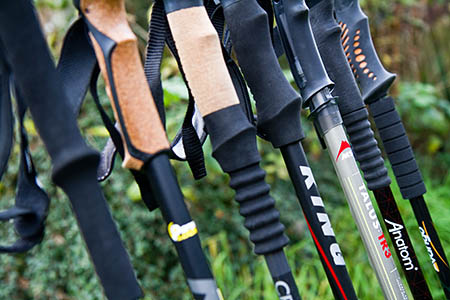

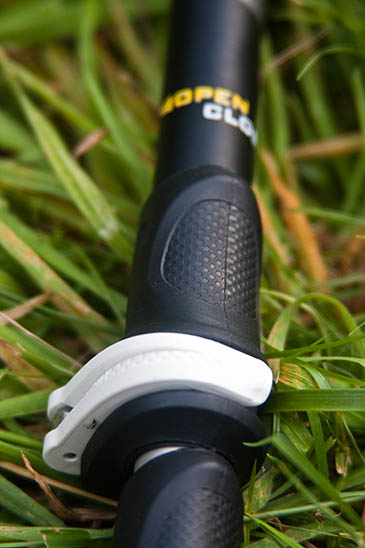
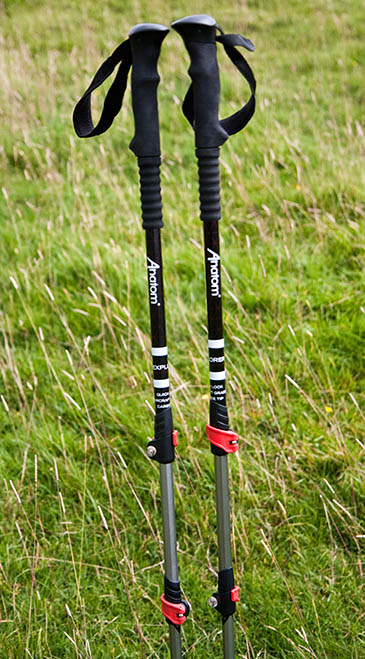
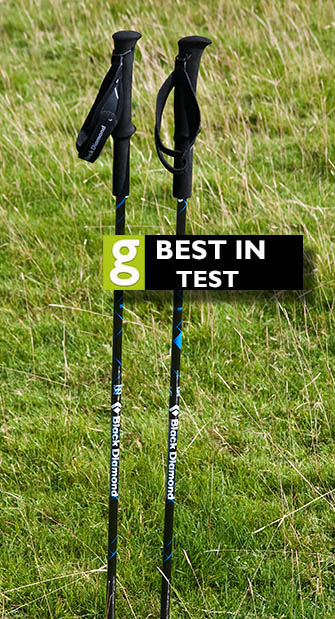
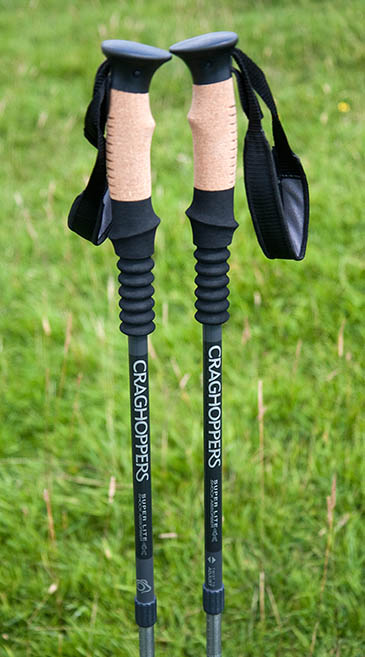
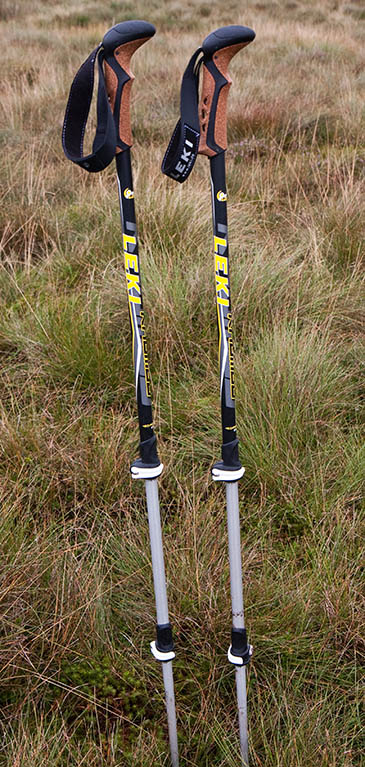
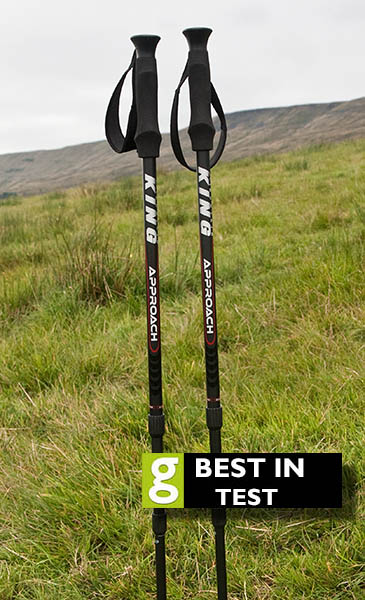
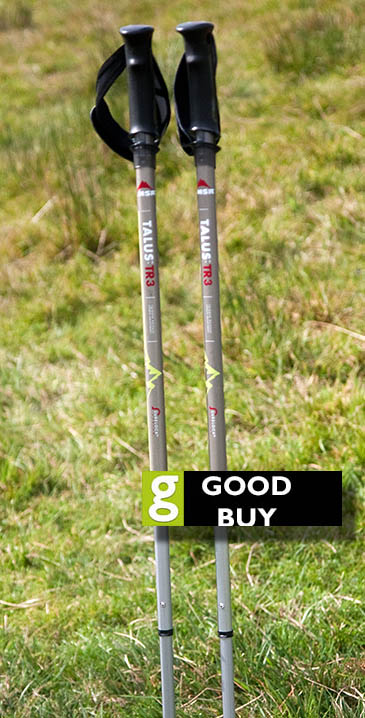
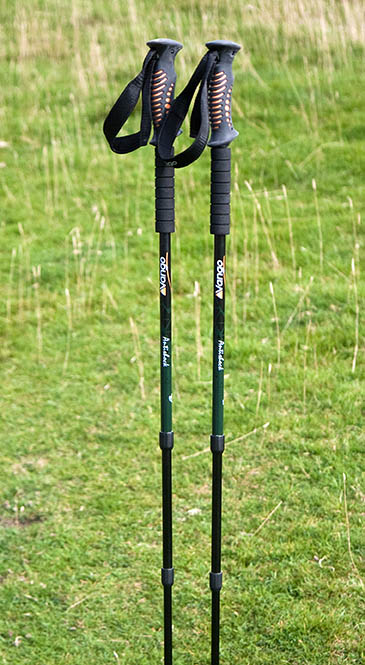
Peter Sheen
02 October 2014Pole testers never seem to try pacer poles which have the best grip in my view. they come in aluminum or carbon fibre from memory - I have the alluminium.
Ian Beswick (@Beswickian)
02 October 2014Non tested with the 'Crook' handle, my own preference. Doubt younger legs need much help up or downhill but i find them very useful. One tip. Remember to take your hands out of the webbing when going downhill. I slipped in the Beddgelert Forest and my weight landed on the pole with my hand trapped beneath. Only resulting in a broken finger but quite inconvenient.
John
03 October 2014I borrowed a friend s carbon fibre pacer poles this summer in the Pyrenees and I have to say they were really good, much easier on the wrists than normal poles. I'm on the hate side of the argument and may actually have been converted!
Ninthace
05 October 2014Agree, pacer poles are more comfortable than poles with more conventional grips and they improve your walking posture too.